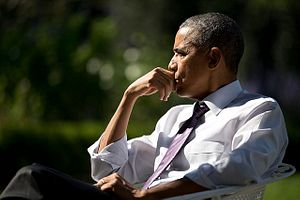What does U.S. President Barack Obama’s State of the Union Address this year tell us about his administration’s plans with respect to South Asia? South Asia did not feature prominently in President Obama’s speech, indicating the relatively low level of priority that the United States gives that vital region compared to East Asia, the Middle East, and Russia. President Obama spoke at length on China’s challenge to the international system, U.S. policy towards Russian actions in Ukraine, and American negotiations with Iran. As Shannon points out, the State of the Union Address is usually a speech “that will likely have little to no relationship to actual government policy,” but this year’s speech featured some exceptions. For example, President Obama very adamantly held that American diplomatic efforts with Iran proceed without Congressional interference, even promising to veto any new sanctions bill that would undo the progress of U.S. negotiations with Iran. However, there was hardly this level of detail on U.S. policy in South Asia.
For starters, President Obama did not once mention India, South Asia’s largest and most important country; one that both Democrats and Republicans have been cultivating stronger ties with. It is surprising that President Obama did not find the room to mention India even once, especially since he is visiting India later this week. This is no ordinary visit, as Obama’s trip marks the first time an American President will serve as the chief guest for India’s Republic Day Parade, held from January 26-28. The parade is one of India’s biggest political events, celebrating India’s transition from a Commonwealth state to a republic in 1950. President Obama even moved the State of the Union Address from January 28 to January 20 in order to attend this event. Thus, his omission of India in his speech is notable.
While President Obama’s visit to India is a big deal from the Indian perspective, the United States administration sees the visit as a more routine operation, though it understands the symbolism behind sending its President to Indian Prime Minister Narendra Modi’s first Republic Day Parade. Relations between India and the United States have improved since Modi became India’s prime minister mostly because of Prime Minister Modi’s ability to get diplomacy and business moving again. Obama’s visit is also a reminder that the United States has not forgotten or neglected India. Beyond this though, it is likely that U.S.-India relations will mostly improve at the level of business and bilateral cooperation and that the United States is not particularly interested in significantly upgrading its strategic relations with India. Some commentators in the United States have argued that Obama’s visit to India is mostly just a glorified vacation and proof that his presidency has entered a lame duck stage.
President Obama, however, mentioned other South Asian states in his speech, but only in the context of other issues. The term ‘South Asia’ was mentioned once, when Obama said: “instead of sending large ground forces overseas, we’re partnering with nations from South Asia to North Africa to deny safe haven to terrorists who threaten America.” This was in context of Obama’s wish to reduce costly U.S. troop deployments throughout the world. The South Asian states he mentioned could include India, Pakistan, and Afghanistan. Although Pakistan is an extremely important country for American efforts to ensure stability in South and Central Asia, its only mention was a statement by Obama that the United States stood “united with people around the world who’ve been targeted by terrorists – from a school in Pakistan to the streets of Paris.” Obama also added that the United States “will continue to hunt down terrorists and dismantle their networks, and we reserve the right to act unilaterally, as we’ve done relentlessly since I took office to take out terrorists who pose a direct threat to us and our allies.” Given this, we can probably expect drone strikes in Pakistan in the future.
Finally, there was hardly any mention of Afghanistan in the speech, despite America’s effort there over the past year to help the country’s new government form and provide continued assistance. President Obama did not mention the political or security situation in Afghanistan nor did he make any pledges for the country’s future, though he praised the country’s first democratic transition and American support for it. Instead, he used the example of Afghanistan to demonstrate the progress the United States has made in reducing troop numbers from Afghanistan and Iraq. He also praised the fact that Afghan security forces are now taking the lead in patrolling their country, instead of American soldiers.
All in all, the attitude towards South Asia that one gathers from this year’s State of the Union Address is one of detachment. It is clear that the administration wishes to disengage as much as possible from Afghanistan and Pakistan, only intervening when necessary to provide a modicum of stability or to take out dangerous individuals. While Pakistan is a difficult case, it would be in everyone’s interests for the United States to continue to engage with Afghanistan as this would enable that country to consolidate its considerable gains and encourage stability in the region. The United States would do well to engage in other parts of South Asia, such as Sri Lanka, where it can likely strengthen ties with that country’s new president. Finally, while it is clear from Obama’s other actions and speeches that he is interested in India, its omission from his speech suggests that this interest may still be mainly in the realm of trade and business or at the interpersonal level. For the United States and President Obama, India is, at this time, not strategically important enough at the military or geopolitical level vis-à-vis other issues to earn a mention in the State of the Union Address.

































